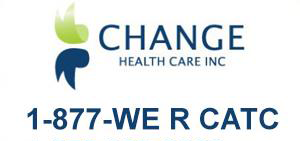Methadone Treatment Facts
As a synthetic opioid, methadone was initially developed for the treatment of pain during World War II. Being part of the opioid family of drugs, it is currently considered as the most commonly used treatment for addiction. Aside from this, it is also used for the treatment of chronic pain as well as pain that is closely associated with terminal sickness. The use of methadone to address drug dependency was only developed during the 1960s. Methadone Maintenance Treatment or MMT is considered as a form of treatment for drug addiction rather than a cure.
How does it work?
The Methadone Maintenance Treatment is used to provide both social and medical support to recovering addicts to allow them to improve and stabilize their lives so that they can be integrated into society as productive members. In recent years, the number of patients that have undergone MMT have risen. In Ontario alone, the number rose from 3,000 in 1996 to more than 50,000, which is about four times the per-capita rate of the United States.
MMT works by individuals contacting a treatment provider either directly or by referral. The referral is normally made by a social service provider or a community health worker. The patients will initially receive a comprehensive assessment to verify if methadone is the right treatment for them. When the patient is admitted into the treatment program, regular contact is maintained with the physician including the treatment staff. The staff is normally composed of nurses and counsellors.
Aside from providing urine samples, the patients need to go to the pharmacy every day to receive medication that will be supervised by a pharmacist. Some may receive medication from the clinic with a nurse supervising the entire process. For patients that have reached a certain level of stability, the number of visits to the pharmacy for their required dose may be reduced. Remaining doses for the week may be taken home in carries and stored inside a locked box.
How long will a patient be under MMT? That would depend and vary largely based on the person needing treatment. What is sure though is that the longer the patient remains in treatment, the better results are achieved with the possibility of relapse greatly reduced. This is the reason why this program is referred to as the Methadone Maintenance Treatment.
To ensure that the treatment is not abused, the College of Physicians and Surgeons of Ontario along with Health Canada developed best practice guidelines for the implementation of the treatment. The guidelines are in addition to the Program Standards and Clinical Guidelines for the delivery of methadone services.
Is it effective?
Hands down, MMT is considered as the most effective treatment to date to address opioid dependency. The significant benefits that a patient receives while under treatment translates to benefits for the community as well. In essence, MMT has been known to reduce deaths caused by overdose, transmission of certain diseases (hepatitis B and C, and HIV), and similar public health risks that are related to drug use.
Those who undergo the program also display improved mental and physical health. After a while, the patient regains social functions and the ability to retain employment. The treatment has also been associated with the reduction in usage of other illegal substances and activities that may result in crime.
Along with these social benefits are the cost benefits. The MMT treatment is widely acknowledged as being cost-effective with each dollar spent on the program resulting in a savings for the community anywhere from $4 to $13. If you take into account the social cost for one untreated drug dependent, factoring in crime victimization, productivity loss, law enforcement, and cost of healthcare, the annual amount would reach $45,000. When the person enters MMT, the amount drastically drops to $6,000 per year.
A key to achieving these benefits is finding the right treatment center to administer MMT. Contact Towards Recovery Clinics today to find out how they can help curb addiction.

.png)


